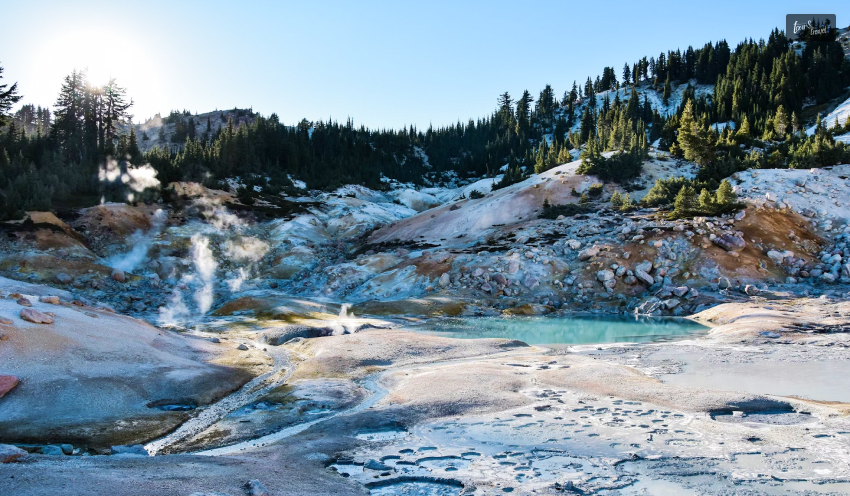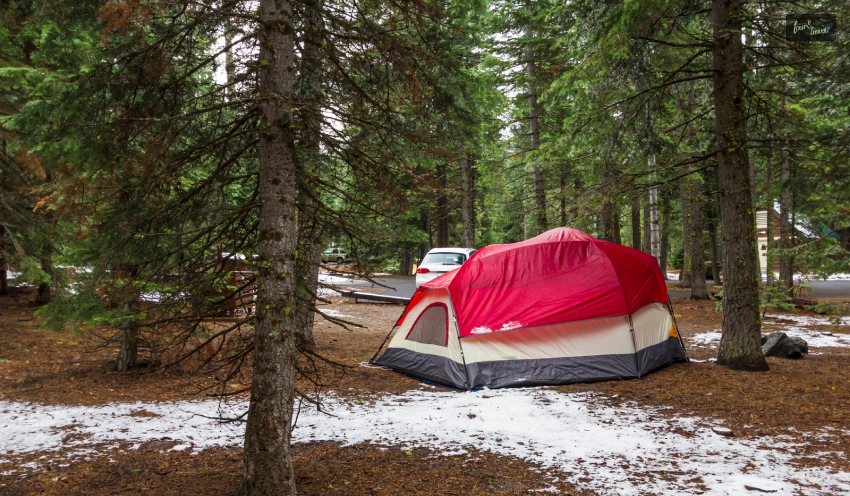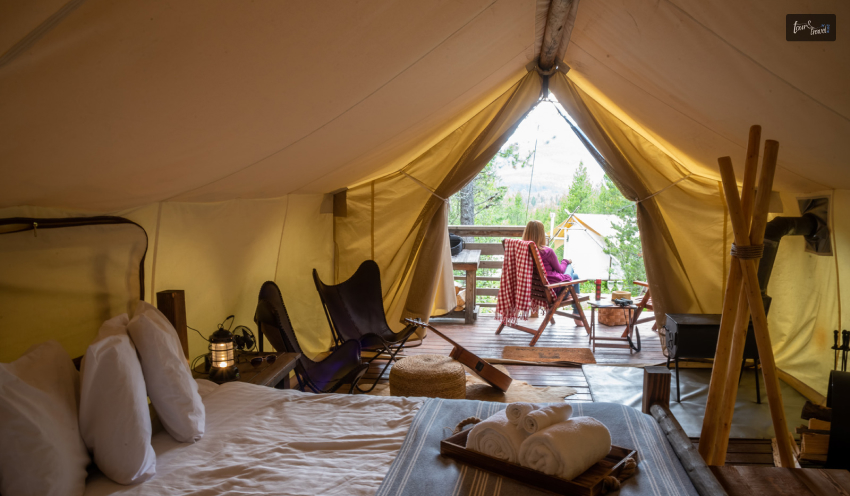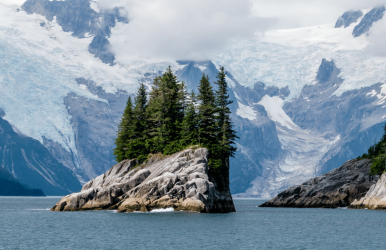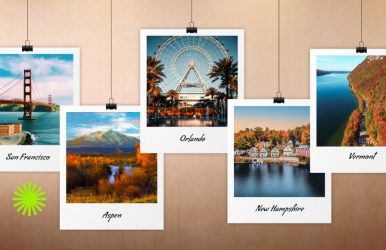Whales And Sea Lions! Exploring Wildlife At Kenai Fjords National Park
BY Sibashree Jul 29, 2024
Kenai Fjords National Park is a place rich in biodiversity. Like the Dry Tortugas National Park, it also harbors a diverse marine ecosystem and a wide range of birds. Further, it is an elusive land of glaciers, icy lands, rocky mountains, and green canopies. It is also the park where you can take part in activities like hunting, fishing, petting at Exit Glacier, boating, and kayaking. However, the most fascinating activity to do here is watching wildlife. Here, I will be your entourage in finding how the wilderness becomes alive at the Kenai Fjords National Park. Exploring Kenai Fjords National Park Wildlife The Kenai Fjords National Park has one of the highest footfalls among the national parks of America. In 2023, 387,525 people visited this National Park thanks to its wildlife and the most dramatic landscape with glaciers, mountains, ocean, and valleys. (Source) Further, the Alaska Department of Fish and Game explains why and how the geographical features of the National Park make it rich in wildlife and biodiversity. About the habitat, it says, “The park contains shallow bays and estuaries, and deeper marine habitats. Regional currents drive nutrients into outer Resurrection Bay, making that area especially rich in fish and an early location for spring bloom of plankton and algae. Cliffs and rocky shores create nesting sites for birds and haul-out areas for marine mammals.” Do you want a slice of wildlife at this park where whales and mountain goats cohabit in the most amazing way? Let’s explore. However, if you are more interested in amphibians and reptiles, the Everglades National Park will be your go-to destination. Whales At Kenai Fjords National Park Wildlife Watching the whales is one of the best activities to do at Kenai Fjords National Park. You can see the whales here throughout the year. The table below presents a sneak peek into the different species of whales and their best viewing time. Type of Whale Best Viewing Time Humpback Whale Mid-May to August Orca or Killer Whale Mid-May to June Gray Whale Mid-April to May Fin Whale May to September You can easily spot whales on the surface of the water. As they spout, fluke dive, breach, or spy hop in the water, you will get to know about their playful nature. The National Oceanic and Atmospheric Administration (NOAA) ensures that cruising companies and visitors maintain respectful behavior when they are on whale-watching trips. Other Sea Mammals At Kenai Fjords Kenai Fjords is home to many sea mammals along with various species of whales. Don’t forget to catch a glimpse of Dall’s Porpoises, harbor seals, sea otters, and sea lions. Dall’s Porpoise Dall’s Porpoises look like orcas but are faster. They eat lanternfish, octopus, and squid. Harbor Seals You will find these cute sea mammals resting around active glaciers. They also stay on ice floes. They love to eat shellfish and fish. Sea Otters You will spot the playful sea otters swimming on their back in the water. They love fish, crabs, sea urchins, and squids. They are furry, and the funniest thing is to see them using their bellies as tables. For sure, you will want to grab a soft toy version of these sea mammals. Stellar Sea Lions Stellar sea lions are an endangered species, and they stay on the icy shore of the sea. They have reddish fur, and they are 6-8 in height. These mammals survive on fish and mollusks. Birds At Kenai Fjords From the NPS archive, a historical document on Kenai Fjords National Park says, “Kenai Fjords provides habitat for at least 191 species of birds. The black oystercatcher spends most of its time feeding in the rich intertidal zone. Tufted and horned puffins nest in rock crevices along the coast. Bald eagles patrol the waters in search of salmon and other fish.” It’s time we meet the birds and learn briefly about them. Horned Puffins These beautiful birds have unique black horn-like markings over their eyes. The touch of red on the tip of their beaks further makes them easily distinguishable. You must visit the Kenai Fjords from mid-May to August to catch a glimpse of these birds. Bald Eagles You may catch bald eagles preying on fish and waterfowl. They get their name from their white-feathered head. Peregrine Falcons Known for excellent hunting abilities, peregrine falcons have a vibrant touch of yellow around their eyes and on their beaks. Along with these birds, you can also see birds like the common murre, black-legged kittiwake, and cormorant at Kenai Fjords National Park. Land Mammals At Kenai Fjords Mountain goats and brown and black bears are common at Kenai Fjords. The mountain goats have split hooves for a better grip on the mountains and on the snowy land. Further, many people visit the Kenai Fjords only to meet black and brown bears. These bears love eating fish, berries, and other vegetation. Final Words Global temperature changes and glacier melting have challenged the vast wilderness at Kenai Fjords National Park. Further, the movements of crustal plates beneath the Earth's surface make the landscape and its ecosystem volatile. So, there is nothing permanent about the animals found in this park, stretching over 1000 square miles of water and land. Also, it is impossible to know about all the species habituating here thanks to the geographical nature and dramatic differences in weather conditions across seasons. Nevertheless, as you take a tour of this rich national park on a cruise or explore its various parks, make sure to abide by the safety norms. Respect nature and its inhabitants! This is the best way to experience the natural abundance the park is known for. Do you have plans to visit the Kenai Fjords anytime soon? What do you find the most amazing thing about it? Don’t forget to share your ideas with us! Wildlife At Kenai Fjords National Park: FAQs What Animals Can You See In Kenai Fjords National Park? Kenai Fjords wilderness is vivid. As you take a cruise trip or explore the National Park, you will notice the seals first, comfortable on the floating ice in the sea. Further, the male and female sea lions make their presence felt on the icy seashore. Kenai Fjords is home to many notable species of marine and land mammals. Also, you will find various birds here. Whales, sea otters, Dall's porpoise, gray wolves, minks, and mountain goats are common animals here. Birds such as puffins, bald eagles, and peregrine falcons will greet you as you visit this beautiful national park. Can You See Bears In Kenai Fjords National Park? Located at the edge of the Kenai Peninsula, Kenai Fjords has black and brown bears. Black bears are easily spotted, and they are more timid than brown bears. The National Park Service has a set of safety guidelines, including not attracting bears with food and garbage and avoiding their personal spaces. Follow the norms to make your interaction with the bears delightful. Can You See Northern Lights In Kenai Fjords National Park? Yes, you can see the Northern Lights in Kenai Fjords National Park during the autumn and winter seasons. The night sky of Kenai Fjords looks like the most amazing melange of green, purple, blue, and green shades. If you are a religious soul, you must visit the Virgin Mary Russian Orthodox Church with the Northern Lights dancing in the sky. It’s the most divine experience. For a spiritual journey, watch the lights over the Seward boat harbor. When To See Whales In Kenai Fjords National Park? You can see whales in Kenai Fjords National Park throughout the year. However, if you want to watch a specific species of whale among the varieties seen here, you must plan a trip according to the right season. The best time for watching gray whales is March and April. In these months, gray whales migrate to this part of the world through the Gulf of Alaska. Do you want to watch the humpback whales? You can see them from May to October. They flock in large numbers from Mexico and Hawaii. They live in the water here as they can find nutrient-rich food for them throughout the summer. In addition, Orcas or the killer whales are seen in mid-May and June. Moreover, if you are lucky enough, you will also see minke whales and fin whales in this area. What Is Special About Kenai Fjords? Your Alaska trip is incomplete without a visit to Kenai Fjords National Park, where you can see the best of the marine world. Also, it is the home to Northwestern, Aialik, and Holgate tidewater glaciers. Glaciers move relentlessly into the sea. Further, it is the most picturesque landscape where mountains, an ancient icefield, valleys, cascading falls, forest canopies, and the great Pacific Ocean coexist. Thanks to this coexistence, Kenai Fjords National Park is rich in biodiversity. You will find humpback whales, sea otters, mountain goats and many species of birds in the National Park. Designated as a National Park in 1980, Kenai Fjords National Park also protects various archeological and historical remains. The park has many prehistoric, protohistoric, and historic sites. Archeologists still conduct surveys in this park to learn more about the human way of living and why it has changed over the years. Also read Things To Do In Rocky Mountains National Park. Top 10 National Parks In Oregon That You Need To Explore In 2023! What Is The Best Time To Visit Glacier National Park? Find The Answer Here!

